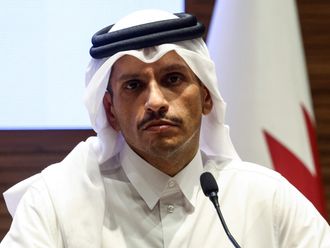Doha: Notwithstanding the spin that accompanied the Gulf Cooperation Council (GCC) Doha Summit a few days ago, and while a major decision to establish a unified armed forces command that will mimic Nato was reached to introduce meaningful cooperation, major differences still lingered.
For starters, the stealthy gathering that lasted just a few hours allowed Qatar to save face even if Doha paid a heavy price for some of its policies.
Although Qatar Emir Shaikh Tamim Bin Hamad Al Thani conceded brotherly relations were nearly impossible when a founding member of the organisation supported the Muslim Brotherhood and other Islamist groups against the will of at least half of the GCC membership, his “truce” was not etched in stone, which was the chief reason why Bahrain, Saudi Arabia, and the UAE agreed to test his pledges.
Abu Dhabi, Manama, and Riyadh turned the page and returned their withdrawn ambassadors back to Doha, but they did not forego the right to retaliate if necessary.
For now, and after the November 16, 2014 GCC Emergency Summit in Riyadh, which was held under the leadership of the Saudi King Abdullah Bin Abdul Aziz, it may be safe to argue the GCC Cold War was in abeyance. Shaikh Tammim kissed the forehead of the Saudi ruler in Riyadh, and extended the red-carpet to GCC rulers and their representatives in Doha, two acts that provided concrete illustration that the Qatari leader was serious and would not allow a fresh “skidding.”
Egypt returned to Qatar the bulk of its financial loans extended to a Muslim Brotherhood government that came to power in 2012, while Doha agreed to ask several Brotherhood leaders to leave the country. The group’s spiritual leader on the promontory, Shaikh Yusuf Al Qaradawi, was persuaded to end his weekly appearances on Al Jazeera. The bombastic cleric was even quoted in print media outlets.
Still, it was fair to ask why GCC leaders allowed matters to reach such a head, when far more dangerous threats loomed over the horizon. To be sure, the rise of Daesh, the plunge in oil prices and the growing influence of Iran throughout the region, were critical factors. Equally important, and even if few bothered to acknowledge this reality, GCC rulers confronted an epochal internal challenge, namely whether the time had finally come to move from mere cooperation to a genuine union.
Although the outlines of these concerns sharpened in the aftermath of the post-2010 Arab uprisings, King Abdullah wasted no time to focus on the fundamentals, as he concluded that only a full-fledged union could save the GCC from oblivion. Two leading countries were reluctant to embark on the dramatic transformations that would inevitably come with a union, Oman and Kuwait, both of wish asked for more time to study the proposal for a while longer even if the Omani Minister Responsible for Foreign Affairs, Yusuf Bin Alawi, categorically rejected the plan.
Nevertheless, and even if advanced in age and physically weak, the Saudi monarch knew full well why such a proposal was essential, precisely because he could foresee unfavourable regional trends that would affect everyone on the Arabian Peninsula.
Ultimately, the 2014 spat that divided GCC states was about the direction to follow: remain a tangential regional organisation with little or no impact on international affairs, or create a strong entity that would gain strength and protect intrinsic interests.
Naturally, this was easier said than done, with a hint of the difficulties that were likely to emerge in 2015 clearly visible in Doha when the Saudi heir apparent Salman Bin Abdul Aziz invited rulers to Riyadh for their 36th Summit. Under normal rotation, the 2015 gathering was to be held in Muscat, though Omani opposition to the GCC Union may have prompted Saudi Arabia to insinuate that some member-states would no longer delay what a majority perceived to be a vital internal realignment.











